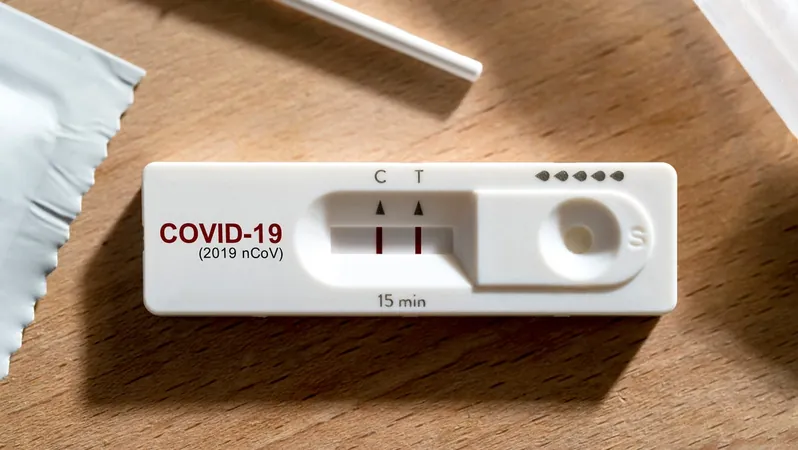
Will the New COVID-19 XEC Variant Spark Another Wave? Here’s What You Need to Know!
2024-10-09
Author: Ling
Will the New COVID-19 XEC Variant Spark Another Wave? Here’s What You Need to Know!
As a new strain of COVID-19 named XEC rapidly spreads across the globe, experts are voicing concerns about its potential implications. Derived from the Omicron variants KS.1.1 and KP.3.3, this variant was first identified in Europe earlier this year and has now made its way to the United States. Dr. Francesca Torriani, an infectious disease specialist at UC San Diego Health, warns, 'We expect this could become the next dominant variant.'
With health officials bracing for a possible increase in COVID-19 cases this fall, many people have pressing questions about the virus, its transmission, and how best to protect themselves. Below, we address some of the most frequently asked questions about COVID-19, particularly in the wake of this new variant.
How is COVID Transmitted?
The XEC variant shares several characteristics with previous strains, particularly in terms of transmission, according to Dr. Torriani. The primary mode of spreading the virus is through respiratory particles. When an infected individual speaks, coughs, or sneezes, they release infectious droplets that can linger in the air. Surprisingly, these particles can remain airborne for minutes or even hours, especially in poorly ventilated areas, making it crucial to maintain distance whenever feasible.
How Long Does COVID Survive on Surfaces?
Although the risk of contracting COVID-19 from surfaces is lower than that from inhaling respiratory particles, it is still vital to be cautious. The virus does not thrive long outside the human body—according to Dr. Nezar Dahdal, a hospitalist at Banner Thunderbird Medical Center, 'On non-porous surfaces like stainless steel or glass, the virus can survive for about one to five days.' In contrast, on cardboard, it can live for up to one day, and on wooden surfaces, it may last for around four days, as reported by the Cleveland Clinic.
This means that if you touch an infected surface and then touch your face, you might transfer the virus into your body, emphasizing the importance of hand hygiene.
Can You Live with Someone Who Has COVID and Not Get Infected?
The answer is yes; it is possible to live in close quarters with someone infected with COVID-19 and not contract the virus. Success hinges on multiple factors, including the strength of a person's immune system, the type of variant, and the hygiene practices of the individual with the virus. Consistent handwashing and sanitizing surfaces can significantly lower your risk of infection.
Preventative Measures Against COVID-19
Simple yet effective practices can help stave off the spread of COVID-19: frequent handwashing, wearing masks, and regularly disinfecting surfaces. Staying current on vaccines is especially important for older adults and those with compromised immune systems.
The latest vaccines target circulating Omicron variants and should also mitigate the risk of severe complications from the unforeseen XEC variant. Dr. Torriani affirms, 'This updated vaccine should provide coverage and decrease the risk of complications in people who get infected.'
Furthermore, to curb the virus's spread, keep windows open to enhance airflow and prefer outdoor gatherings when possible. Dr. Torriani states, 'Increasing air turnover reduces the number of airborne particles, thus lowering the chances of inhaling the virus.'
With COVID-19 still posing a considerable threat, staying informed and proactive in preventive measures is essential. Click here to learn more about how to protect yourself and your loved ones as we navigate this new chapter of the pandemic.

 Brasil (PT)
Brasil (PT)
 Canada (EN)
Canada (EN)
 Chile (ES)
Chile (ES)
 España (ES)
España (ES)
 France (FR)
France (FR)
 Hong Kong (EN)
Hong Kong (EN)
 Italia (IT)
Italia (IT)
 日本 (JA)
日本 (JA)
 Magyarország (HU)
Magyarország (HU)
 Norge (NO)
Norge (NO)
 Polska (PL)
Polska (PL)
 Schweiz (DE)
Schweiz (DE)
 Singapore (EN)
Singapore (EN)
 Sverige (SV)
Sverige (SV)
 Suomi (FI)
Suomi (FI)
 Türkiye (TR)
Türkiye (TR)